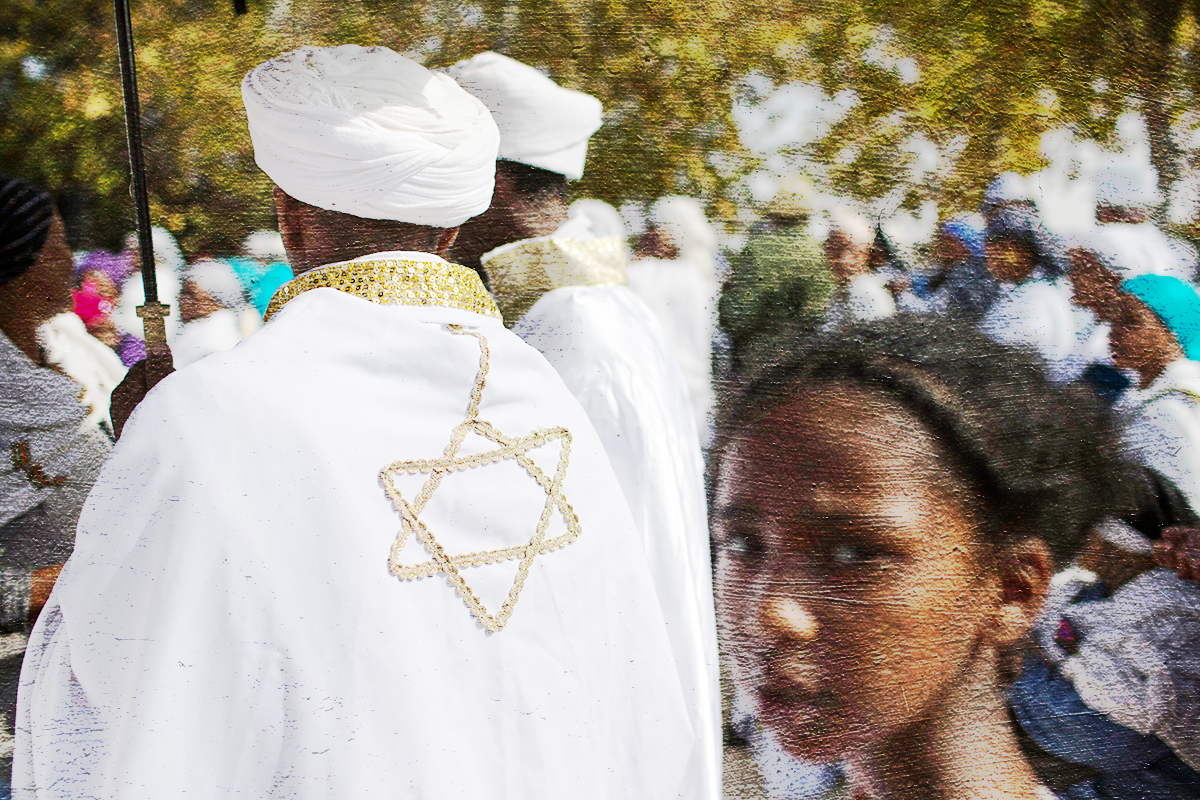I was raised in Ashkenazi American communities in Atlanta and New York but was instilled with a deep, burning love for the history and culture of my own people while living amongst our cousins. I sat at my grandfather’s feet as he recalled the histories and myths of our ancient home. I was told stories about Queen Yudit, a warrior queen who united Beta Israel and polytheists against Christian emperors, and Mathari Sothal, a failed messiah who wished to lead us to Jerusalem — how they both represented new ages for our people.
And who are my people? I am a member of Beta Israel, a descendant of a tradition and people birthed 2,500 years ago when our ancestors settled in what is now Ethiopia.
The Jewish world I grew up learning about was rooted in New York City and the Pale of Settlement, but I knew my real Jewish home to be in Lake Tana and Axum — with rendezvous in Sana’a, Baghdad, and Timbuktu. As an African Jew, one of the greatest pains is how we are so often overlooked in American Jewish life.
While the mainstream Jewish community has been doing a better job in recent years of acknowledging the diversity of people who identify as Jewish — including Mizrahi and Sephardic Jews — there’s still a long way to go. More than acknowledging that Jews besides Ashkenazi Jews exist, we need to also talk about the diversity of minhag among these groups. Minhag is, simply, a Jewish custom and a religious practice; while sometimes minhag are widely practiced, they are not dictated by Jewish law, halakha.
Communities like Beta Israel are outside of Rabbinic Judaism — the mainstream form of Judaism since the 6th century CE, based around the Talmud — and we and other African Jews often face utter disregard of our traditions and even outright rejection of us as Jews.
Case in point: In January, we witnessed the Jewishness of Ugandan Jewry — known as Abayudaya Jews — not only come into question but outright rejected by the Interior Ministery of Israel. This happened when Kibita Yosef, a Ugandan Jew who had converted to Judaism in 2008 under the Conservative movement, had his request to make aliyah to Israel denied, despite the fact that Israel’s Law of Return allows all Jews, including converts, to become citizens. Rabbi Jill Jacobs, executive director of T’ruah, condemned the decision, telling JTA it was the result of “pure racism.”
The pressure placed on non-European Jewish communities to fall into the mold has led to a loss of the unique traditions that make us who we are. Haymanot is the name for the practices that the Beta Yisrael have adhered to for millennia in our diasporic homes. Our communities have been led by a line of Jewish priests known as kahen or qäsis for millennia. Unlike mainstream Rabbinic Judaism — which began with the fall the Second Temple, with a reliance on the rulings of sages and eventually rabbis — Beta Israel kept our priestly line intact. Our kohenim, priests, form the backbone of ritual practice and are led by the Liqa Kahanet (High Priest).
In the 16th century, in response to Ethiopian and Portuguese Christians destroying our literature and declaring us falasha, a slur meaning “invader,” Beta Israel began using monastics. This practice is meant as a way to preserve the scraps of knowledge that did survive.
Another major difference between Rabbinic Jewry and Haymanot is the answer to the age-old question of “Who is a Jew?” Among Beta Israelim — as well as Samaritans, Karaites, and Kaifeng Jewry — one’s Jewishness is determined patrilineally, meaning someone is a Jew if their father is. This fact might shock many Jews in Rabbinic communities who were raised with the belief that Judaism is handed down matrilineally, at least traditionally so.
One of our most notable and unique holidays is Sigd, which marks when Moses came down from communion with the Divine and is celebrated 50 days after Yom Kippur. “Sigd” means “prostration” in Ge’ez, an ancient Ethiopian liturgical language, and the holiday is traditionally observed by ascending a local mountaintop while fasting and culminating in a festival following prayers, prostration, and reading from the Torah. Historically, Sigd has been a time for the disparate communities of Beta Yisrael to reconnect and even matchmake in the mountains of what is now Ambover, Ethiopia. Today, I make space for this holiday by fasting and praying in the mountains of North Carolina while looking into the eyes of the cows and goats kept on my campus.
For me, being a member of the Jewish people is very strongly connected to the traditions that were formed in our various communities during centuries, and in some cases, millennia throughout the diaspora. To lose tradition in the name of homogeneity is a betrayal to everything that has enabled us to come from such rich and complicated backgrounds.
While it’s true that there is so much that connects all Jewish people around the globe, we can’t ignore the very real differences among our communities, and we can’t assume that one tradition is more valid — more Jewish — than another. We as a people have faced the threat of extermination for our faiths and cultures for millennia, and in this day and age, we are finally given the ability to create a connected, global community millennia in the making. We need to question and challenge the established paradigms of Jewishness to make a community that is genuinely pluralistic. I offer you a seat at the table of what Am Yisrael can and should be.



